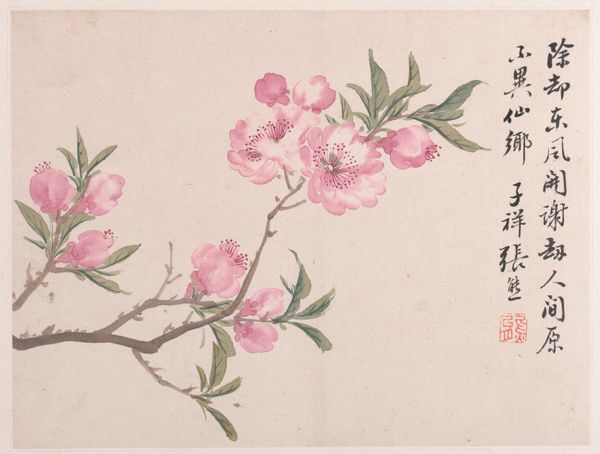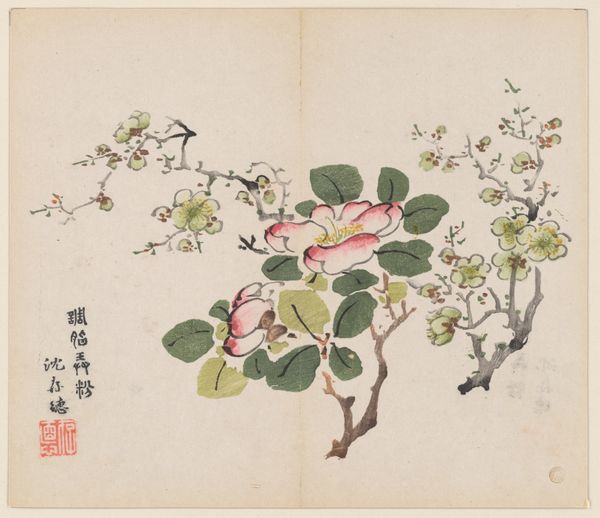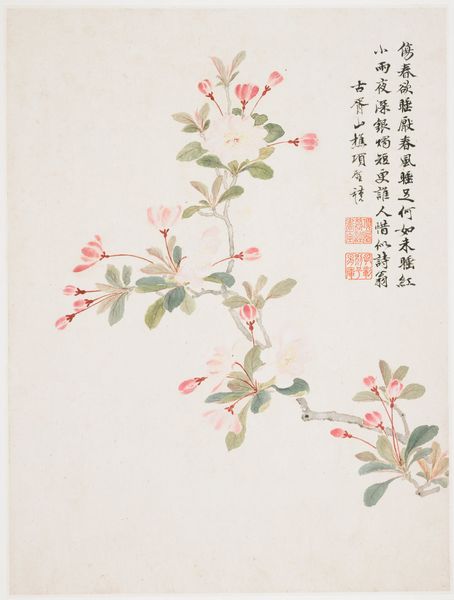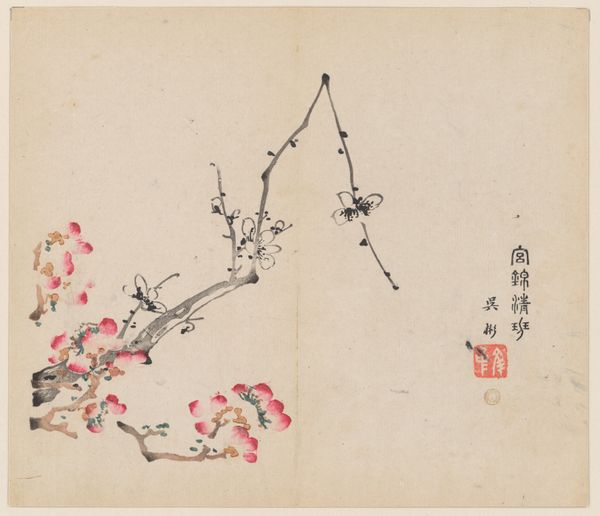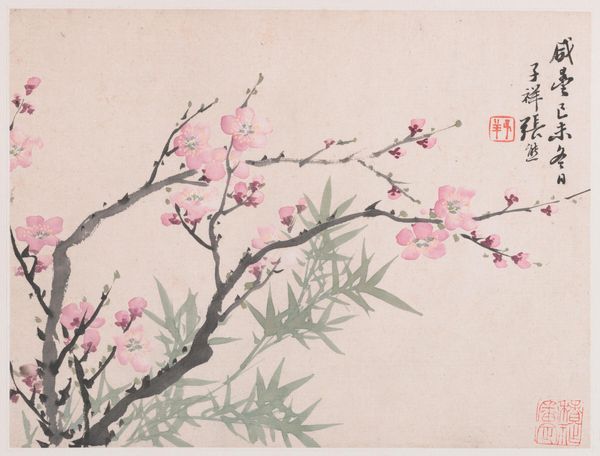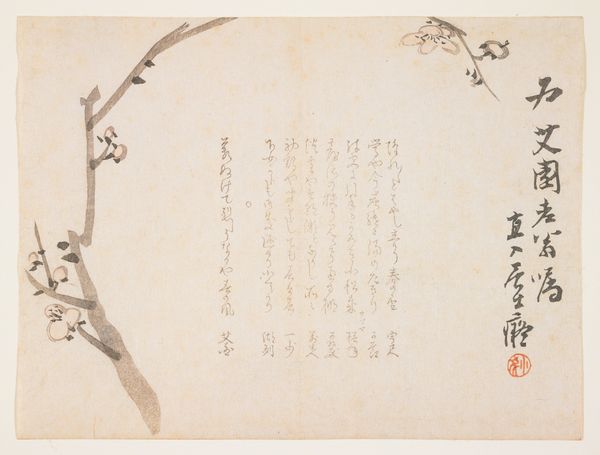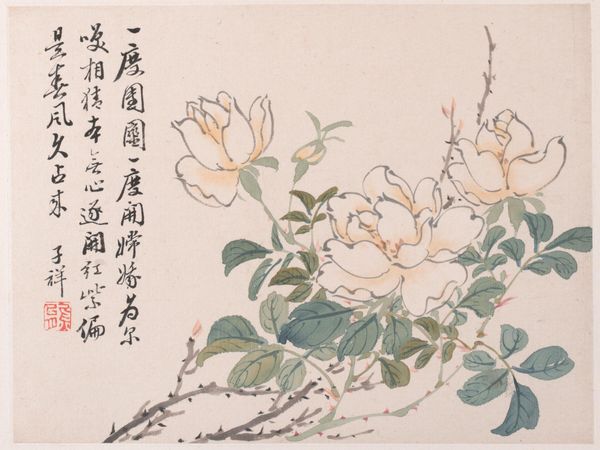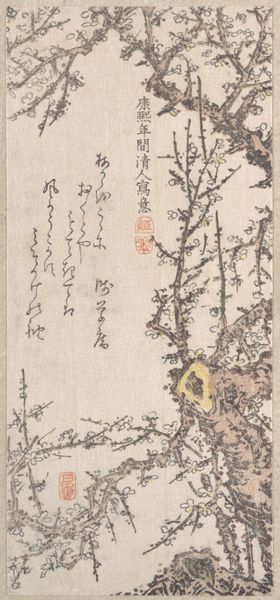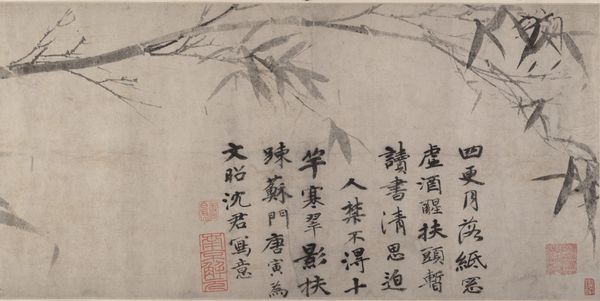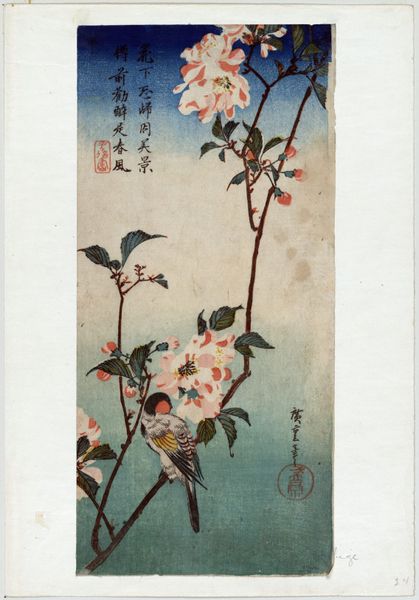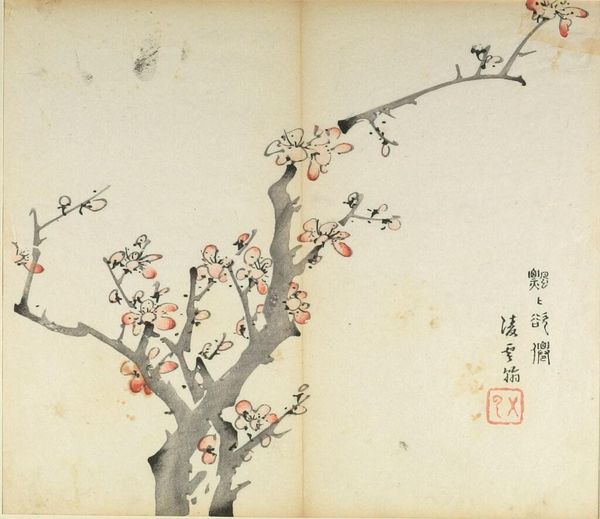
drawing, paper, watercolor, ink
#
portrait
#
drawing
#
ink painting
#
asian-art
#
paper
#
watercolor
#
ink
#
botanical art
#
watercolor
Dimensions: 12 1/8 x 9 1/16 in. (30.8 x 23 cm)
Copyright: Public Domain
Curator: This is a leaf from the "Album of Ten Leaves," a watercolor and ink drawing by Xiang Shengmo, dating back to 1656. Editor: It’s so delicate. The pale pink blossoms against the muted browns and grays give it such a serene, almost melancholic mood. The composition feels so light and airy. Curator: Shengmo lived through the fall of the Ming dynasty, becoming a loyalist refusing service to the new Qing rulers. Art became a form of quiet resistance. These botanical studies reflect an elite culture retreating from political life to refine their taste and signal cultural affiliations. Editor: The meticulous details—the careful rendering of each petal, the subtle gradations of color—point to a deep appreciation of the natural world. But the overall effect isn't purely representational. I see how the strokes and their arrangement capture an essential expression. Curator: Indeed. Although the piece depicts an unassuming branch with blossoms, it is full of subtle details. Inscriptions and seals further communicate meaning and demonstrate Shengmo’s social standing and engagement with scholar culture. Editor: Look at the balance achieved through the asymmetrical arrangement! The placement of the blossoms, counterbalanced by the calligraphy, keeps your eye moving across the page, revealing layer after layer of visual texture. Curator: As a scholar-artist, painting for Shengmo, served to reinforce traditional social hierarchies while he withdrew from them materially. Here, you see painting becoming more than mere aesthetic pleasure, it turns into an active statement of allegiance. Editor: What strikes me most is the interplay between the representational and the abstract qualities of ink and watercolor on paper. It’s a beautiful synthesis of observation and expressive mark-making. Curator: Studying the album reveals a lot about artistic strategies used during times of massive political change. Editor: Absolutely. Examining how those ink strokes define shapes, capture texture, and direct our perception enhances its appreciation. A timeless conversation with spring in painted form.
Comments
minneapolisinstituteofart almost 2 years ago
⋮
Xiang Shengmo was born into one of the most prestigious families in Jiaxing, a city in northeastern China. When the Manchu invasion reached Jiaxing, in 1645, many of Xiang’s friends and relatives died in a vain attempt to save their city. His homestead was destroyed and his family’s art collections lost. Following this upheaval, Xiang’s painting changed from an amateur, literati pursuit, becoming a source of income. Xiang was at the height of his technical and expressive powers when he created this album, featuring a wide range of flowers including wintersweet, cockscomb, apricot, pear, daylily, and cassia. He worked here in pure color without ink outlines and in shaded brushstrokes, which give the impression of three-dimensional modeling. Leaf 1: Apricot I dare say that in the mountains there is no need for calendars,Watch of the approach of the red apricot, for then it is time to plow;Seeing this glory I cannot help but think of the Tang imperial Jasper Garden,Where graduates who ruled the country were first asked to enter into service.Sold along the streets during the second month of spring,They point out the village entrance at three-forked mountain roads;Where people live in jade towers, will horses neigh'[The point] where the color of grass merges with that of the sky cannot be fixed.During the spring of the year 1656, composed and painted by Xiang Shengmo.
Join the conversation
Join millions of artists and users on Artera today and experience the ultimate creative platform.

